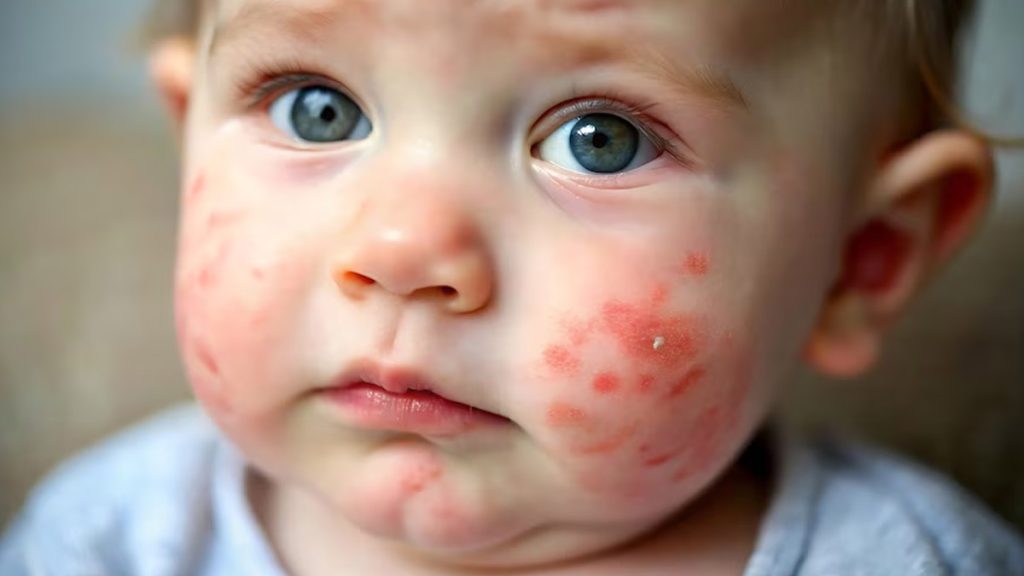Atopic Dermatitis is a common skin disease in children. It causes your child to develop rashes that come and go, dry, inflamed, red, and itchy skin. However, atopic dermatitis is a disease that parents can deal with. They just need to understand the causes and make some changes to their child’s daily life.

Atopic dermatitis is a skin inflammation that is not cause by infection. It is cause by abnormalities in the skin structure, causing the skin to lose water until it is dry and easily inflam. Or it may occur in cases where someone in the family has a history of allergies. The symptoms that occur in children at each age are different. If it is a child under 2 years old, it is usually on the cheeks, forehead, neck, outer arms. And legs, wrists and ankles แทงบอล UFABET ราคาดีที่สุด ไม่มีขั้นต่ำ. As for older children or even adults, it is often in the folds of the arms, legs, feet, and ankles.
The main symptoms of this disease are itching on the skin and red inflammation caused by scratching. Cream must be use to relieve itching and redness. Symptoms to watch out for are the appearance of a red, itchy rash. Especially in areas where sweating occurs easily, such as the folds of the arms and legs, cheeks, forehead, and neck. If you scratch frequently, you may develop an infection.
Since atopic dermatitis can be cause by many factors, including genetics in the patient or family members who have allergies, there is currently no clear way to prevent atopic dermatitis.
Start with basic skin care that should be practice regularly to help reduce the recurrence of rashes, as follows:
- Give your baby a bath at normal temperature, not too cold or hot, 1-2 times a day for no more than 5-15 minutes, as longer than this can cause the skin to become moist.
- It is not necessary to use soap every time you bathe. Children may reduce the use of soap in the morning, since they have already washed their bodies the previous evening.
- After taking a shower, pat yourself dry; do not leave your skin damp.
- Apply a cream or lotion after bathing, and use a cream to relieve itching and redness during the day if your baby notices itching.
- Wrap with a saline-soaked cloth to help relieve symptoms.
- Avoid skin irritants such as sweat, saliva, chemicals, perfumes, alcohol, and wearing harsh clothing that may irritate the skin.
However, avoiding triggers such as certain foods, weather, irritants such as chemicals, perfumes, soaps, powders, detergents, dust mites, sweat, fabrics that irritate the skin, bacterial and fungal infections, scratching, and stress can prevent the rash and reduce its severity.